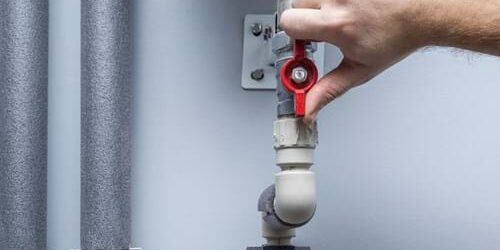As winter starts to bite a little harder and temperatures continue to drop, many people probably don’t realise how your home can be impacted by the harsh weather.
One common feature your property is susceptible to is freezing pipes.
Frozen pipes are an inconvenience at first, but can lead to much more significant problems such as bursts pipes and leaks.
With this in mind, we’ve compiled five top tips to help when your home is affected by frozen pipes.
Turn off your water supply
The main risk that comes with frozen pipes is the expansion of the water inside them, which can damage the pipe and the entire water system. So, make sure you’ve turned the water supply off at the mains before attempting to thaw your pipes – this is very important as the constant flow of water could cause more damage as you try to thaw the pipes. You can do this by closing the water supply valve, which is usually located by your water meter near the boiler or under the sink.
Get your hot water bottle out
Pipes outside the property (often the wastewater pipe) often get frozen during a cold spell, but they can be easily thawed using a hot water bottle. Boil a kettle and fill the water bottle with a mixture of boiling & cold water – as boiling water could melt the pipe or cause excessive damage. You may look odd holding a hot water bottle to your pipes but it’s a quick win to get the heating back on in your home.
Portable heaters
Introducing a portable heater close to frozen pipes can be a quick and easy way to solve the issue. Place the heater in the same room as the pipe and leave it to heat up and thaw the pipes slowly.
Hairdryer
This might sound silly, but the stream of hot air from a hairdryer can be perfect to thaw pipes containing frozen water. The fact that the temperature of most hair dryers is adjustable makes them the perfect as to not overheat the pipes, plus you’re far more likely to have a hairdryer lying around the house.
Heat lamp
Set up a heat lamp close to the pipes and wait for the water to thaw. Often, there can be mild swelling or expansion in the areas of the pipes containing frozen water, which will influence where you place the lamps. However, this should disappear once the water starts flowing again.
All of these tips are necessary to quickly and safely remove frozen water from your pipes, but please remember it’s important to take pre-emptive measures to stop the problem from happening in the first place.

